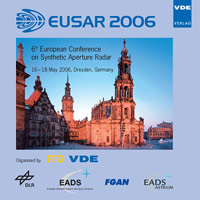Spectral Diversity Methods Applied toDEMGeneration from Repeat-Pass P-Band InSAR
Konferenz: EUSAR 2006 - 6th European Conference on Synthetic Aperture Radar
16.05.2006 - 18.05.2006 in Dresden, Germany
Tagungsband: EUSAR 2006
Seiten: 4Sprache: EnglischTyp: PDF
Persönliche VDE-Mitglieder erhalten auf diesen Artikel 10% Rabatt
Autoren:
Reigber, Andreas (Berlin University of Technology, Computer Vision and Remote Sensing Group, Berlin, Germany)
Mercer, Bryan; Maduck, Joel; Kahr, Erin (Intermap Technologies Corporation, Engineering Technologies Division, Calgary, Canada)
Prats, Pau (Universitat Autònoma de Barcelona, Department of Telecommunications and Systems Engineering, Bellaterra, Spain)
Inhalt:
Single-pass SAR interferometry is an established method for generation of precise digital elevation models (DEM). Although being a well established technique, it has one main disadvantage: At X-band, the penetration of the waves into vegetation layers is very small; the interferometric phase centre, which is measured by the interferometer, lies close to the top of the vegetation. An alternative is the use of much longer wavelength. At P-band, the interferometric phase centre is known to be close the ground, but very large baselines are required to obtain desirable height accuracy. In practice, the easiest way to realise this is through use of repeat-pass interferometry. However, repeat-pass interferometry requires precise compensation of residual motion errors. This paper presents a processing scheme to obtain accurate DEMs from P-band airborne repeat-pass SAR systems. By the usage of advanced spectral diversity methods, the limitations due to residual motion errors are circumvented almost completely. Exemplarily, a DEM of a forested region (Capitol Hill,Washington, USA) is derived from repeat-pass data acquired by the Intermap sensor TopoSAR at P-band. The true accuracy of the derived height information is evaluated using high-precision Lidar ground topography data. This will permit to give some indication about the operational applicability of repeat-pass interferometry for the measurement of the ground topography of forested areas.


